DCCCR….. what is that? I just got used to OC/DSV-CCR-SCR-PVAR-ADV-MCCR-YBOD-FFM and even a few more abbreviations.
Now a new one ” Diver Controlled Closed Circuit Rebreather”. It made me wonder what was behind that..
I contacted Andy Fritz, managing director of Rebreatherlab in Thailand to get more information about there new Pelagian rebreather.
It seems I was a bit early asking detailed information, but I am promised to be informed when the first production is ready!
Andy wrote down the most questions about his new rebreather that were asked. When you read the arguments and thoughts he used in his design, especially the depth compensating first stage together with a metering valve, it is very interesting!
I published this page many years ago. In the meantime, in 2022, the rebreather will be in production and many more details are known. Even dates of the scrubber and an explanation of how the current version works are included in the PDF at the end of this page.
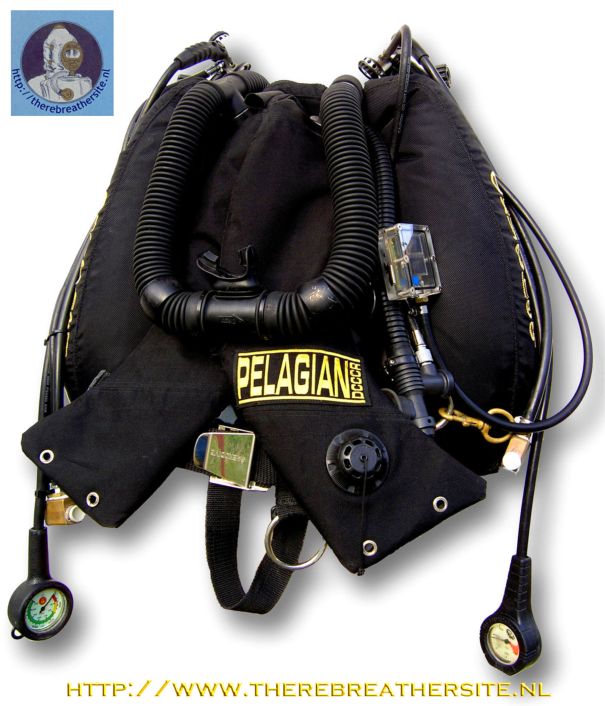
Q: Why are there so few detailed pictures on the Rebreather Lab web site? (20
A: The current web site was published a few months ago in order to gauge the market interest and a few pictures were taken to display the streamlined framework and compactness of the unit.
These pictures are from one of the prototypes and we wanted to avoid tear down pictures for two reasons: The production unit will look very different in the head compartment, (no protruding pipe work and much stronger!), and as we did not want to confuse people we opted to wait with tear downs until the production unit was ready. The other reason is that we knew that if people were interested they would email their questions and we have received loads of them! As we received a much higher than anticipated interest and sold nearly all units in the first batch on pre order, we quickly decided to prepare for higher volume. We built a new larger facility and ordered heavier machinery which we are now tuning. The first production run is ready in mid January and we will revamp the web site shortly after.
Q: The O2 delivery system is a hot topic: Why use a depth compensating 1st stage?
A: Yes I agree it IS a hot topic! The short answer is to overcome the depth limitation of a non compensating 1st stage. I have dived a similar system since 97 with very few problems. This is actually one of the reasons we decided to build the Pelagian in the first place. The public opinion in the RB community would suggest it is suicide and I think most people believe they would get twice as high dose of O2 at 10 msw. as on the surface. This is not the case. Think about the difference in drinking water or milkshake through the same size straw. The denser the gas the more friction and this slows down the flow. We have done swim tests with the same needle setting at the surface and then at 40 m and we had to swim for 10 minutes to pick up any noticeable difference. When I started diving converted IDA-71’s with this feed system I did not spend much time with calculations. I just dived and turned down the needle valve a little when going deeper. Maybe the fact that you do need to stay on top of the feed keeps you monitoring the displays regularly. Anyway, after some years I had logged over 700 hours on my IDA, survived the dreaded compensating 1st stage and thought that it was time to construct an RB from scratch using this feed system. The needle valve has other benefits like the reduced chance of clogging and the fact that you take an active part in the O2 feed. This does not mean that you have to readjust the flow every meter you go deeper. You typically have one setting for 0 – 30 m and maybe another for sub 40m. As you get shallower you just puff the manual feed a bit more often. If you are maintaining constant Po2, you would have to raise the O2 percentage during the ascent on a RB using a non compensating 1st sage as well. When I dive a Kiss I don’t feel I feed O2 less frequently.
Q: Ok, but what happens if you go really deep?
A: You turn the needle all the way down, manually feed and open the needle very little. As a manufacturer I have to be a bit careful of what I say here, but for the purpose of theoretical discussion, if some one would worry about the sensitivity of the needle it would be easy to install a shut off valve and only feed manually with the over ride button.
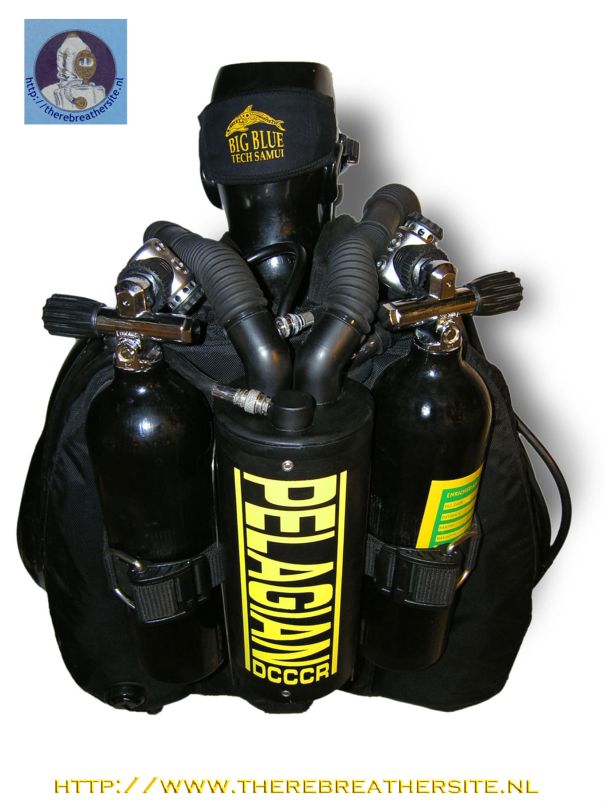
Q: Why is the Pelagian only using two sensors and one display case?
A: Primarily because there is no solenoid and thus no need for voting logic. Secondly because many divers want to ad live feed to a VR3 or other computer. There is space in the head to ad a third sensor that is only feeding the computer. If you do not want to ad a VR3 you can use either constant Po2 hard tables or software. Two sensor readings is enough as long as you ensure they are calibrated, not too old and not current limited. Please bear in mind that it very easy to validate your Po2 on the Pelagian as the diluent is fed over the sensor faces. You do not have to purge your loop three times to check the sensors. All components in the display case are of such good quality that they would survive a short. A year ago while testing case designs I flooded the display when I forgot to install the o-ring. The circuit board got fried on the battery plus side, but all components were ok. After that we started potting the PCB’s. To test it I deliberately did two dives with a completely flooded housing and still enjoyed reading the Po2 on both displays. After the dives I rinsed the electronics in fresh water and dried it. I still use that display today. I might ad that the case is sealed from the breathing loop and kept at 1 ATA! You can turn the display on and off and also turn backlight on and off with only one magnetic switch.
Q: Where is the battery and what type is used?
A: The battery is a normal 9V square that you can buy cheap in 7 Eleven. It is kept in the head in it’s own sealed compartment. This is to address the problems that usually happen after opening and closing the display to many times and also to keep the size of the hand unit down. The Pelagian’s display case never have to be opened.
For serious deco dives, most RB divers prefer to ad an on-line computer. There is already a bulk head fitting for the cable with a blank plug installed in the head. To install the computer cable, simply open the fitting, pull out the plug and run the cable through. If some one would like an additional display instead of a computer, we sell that as an option.
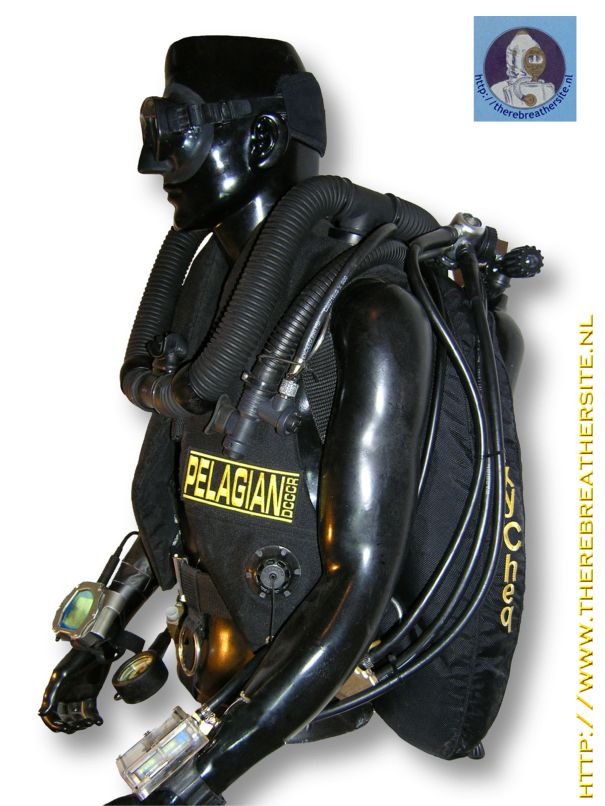
Q: What is the scrubber duration, and what method was used to gauge it?
A: We have not done any CE, or other third party testing. We have simply calculated the weight of the soda lime, the volume and gas path of the scrubber against typical metabolism. This gave us a ballpark figure. Then we dived it during 8 months to much more than the rated duration. On the last dive before a scrubber change I many times pushed it by swimming really hard for 10 minutes. During the initial dives I worried about it as I am quite sensitive to CO2 and get head aches easily, and it was a real boost of confidence when I didn’t get any. We rate our standard scrubber to 4 hours in cold water and 6 hours in tropical water. We have a longer optional scrubber mid section that is rated “up to 8 hours” This means low CO2 and warm water. The durations given by many other manufacturers are very conservative as unrealistic testing methods are used. Our figures are based on real dives instead of “in the worst case scenario” dives. If someone is actually planning on producing 2 liters of CO2 per minute continuously, they should not dive to our rated durations! Our durations are no mystery. In a standard RB class the instructor tells his students that RB X scrubber duration is 3 hours. Then he goes off diving it to 4 hours or more when the student is not watching. Of course the student picks this up, but he might not know how much the duration can be exceeded. Our approach is to give him the 4 hours, but emphasize that this is individual and that caution should be taken towards the end of the duration.
Q: What is the story with the curved lungs? What about work of breathing?
A: The curved lungs come from my personal irritation of having over the shoulder lungs blocking my chest area. They also follow the body contour, so apart from keeping your chest cleaner, the W.O.B. is even lower than with standard front mounted lungs. After all your own lungs are not located outside your body, but inside. A diver in a standard horizontal swimming position keeps most of the breathing volume at the same hydrostatic pressure as within his own lungs. I have received many emails from divers worrying about that a bail out tank might squeeze the lungs. That is well tested and does not happen. If you like wearing two slings on the same side and feel a resistance you can simply move the counter lungs more towards the middle. The lungs come with two ways of attachment: One that keeps the lungs along the shoulder parts of the harness. The other is the standard way with a Fastex that clips to the waist part of the harness. The inner bags are made from vulcanized off road MC inner tubes. The outer bags are made in Ballistic Nylon. There is an over pressure relief valve on the exhale side and people can order their units with it either high or low. When ordering a unit we also ask for body weight, length and a measure from the top of the shoulder to the belly button to ensure the right size lungs.
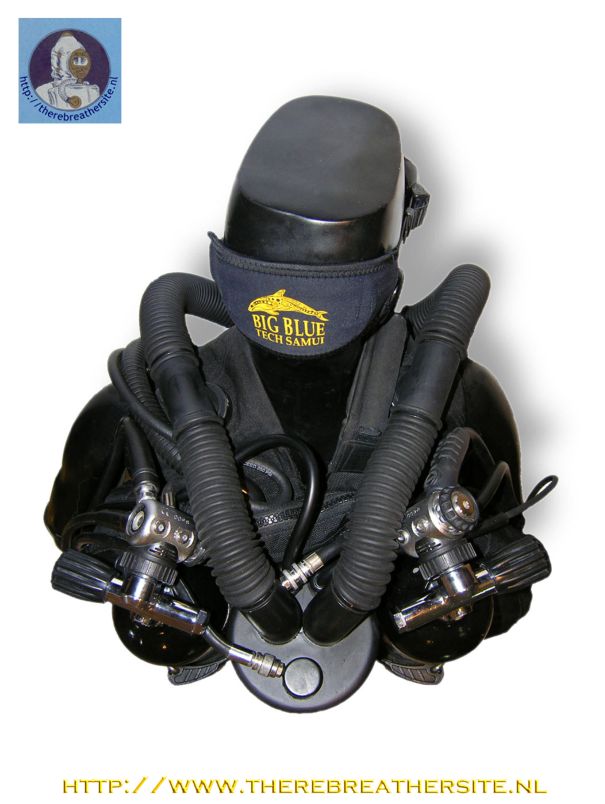
Q: What materials are used for the other parts? How do you build the Pelagian?
A: We start in a CAD or 3D modeling program to calculate fit and function. Then we cut the parts with both manual and CNC machines. The scrubber mid section is made from PVC. Apart from this all other parts are made from black Acetal. The O2 feed unit is made from brass. The needle valve is user serviceable, but I have never had to service any. All hoses and fittings are standard. If you break an O2 feed hose you could use a standard BCD inflator hose as replacement. If you get a leak in the DSV flapper valve you can cut your own replacement from a latex dishwashing glove. We use as few o-rings as possible, which is something I learned from the IDA-71. The whole unit is very easy to set up and tear down with very few tools and you can service it with many standard items. In between dives you can get to sensors, battery and water trap with out pouring the sorb out. There is nothing worse than having to sit out a dive because you didn’t bring your whole toolbox or enough spare parts!
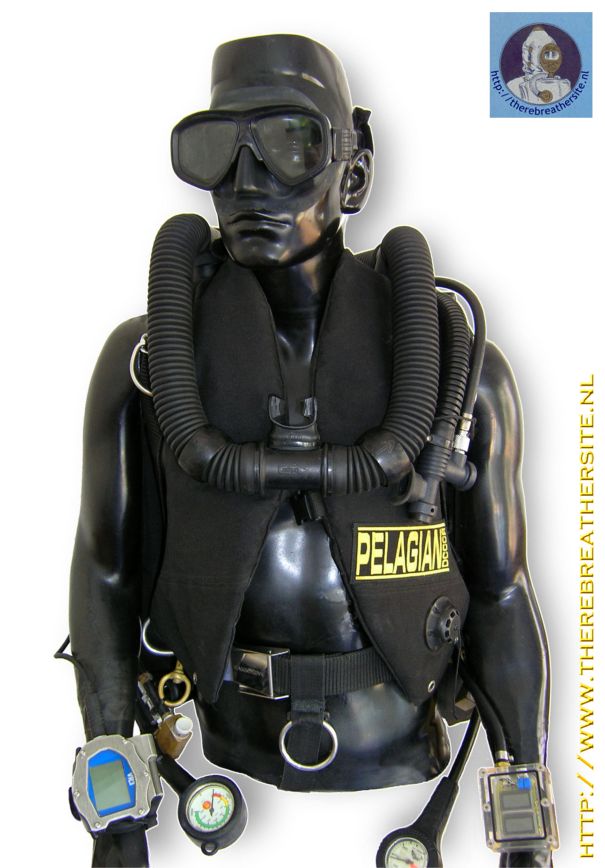
Q: What is the price and order procedure?
A: The price for the standard unit is 5.200 USD. (check for current pricing!) We are running an introduction price for orders placed before Feb 15 at 4.400 USD. We will produce the Pelagian in batches. Once we have sold half of the current batch we start producing the next. This way we hope to keep lead time down, but at the moment it is 60 – 90 days as we have a big back order to deal with. To secure a unit in a batch we need a 50% deposit, but you can also just ask to be contacted when a unit is available. A buyer need to have a certification and we provide it at our facility in Thailand, at the moment through PSAI, but I am sure also through other agencies in the future. PSAI provide a rebreather friendly system where you get credit for another CCR certification and only have to complete the unit specific part of the course. If a diver has no other CCR rating he will only need an entry level, advanced and basic Nitrox card. We will incorporate everything else needed in the Pelagian course. The course is very rigorous and contains many skills beyond what is normally taught in a standard CCR course. After the course he can take additional levels like air deco and mixed gas using his RB. He will not have to take the detour of first getting the ratings with open circuit. We also conduct instructor courses at our facility and offer incentive schemes to ACTIVE rebreather instructors who wish to buy units and teach classes. Just ask and you shall receive!
Q: What is included and how is it delivered?
A: The Pelagian DCCCR is sold as a kit for liability reasons. We also believe that it you can not put it together your self, you should not dive it. The standard unit include mounting plate, 2,7 kg scrubber, O2 display unit for two sensor read outs, counter lungs, breathing hose with DSV, two 1st stages and O2 feed unit. What you need to ad are O2 sensors, BCD and cylinders. At the moment we only offer training here which means you have the option to bring the unit with you or we can send it with DHL, EMS, FEDEX or sea freight. As more instructors become available we can send through dive centers or instructors until training is completed.
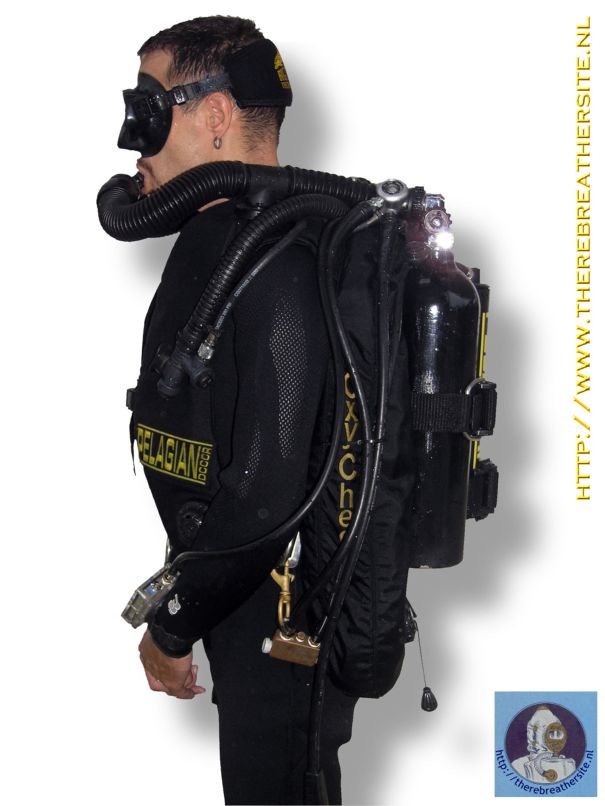
De hieronder afgebeelde PDF toont de huidige configuratie van de rebreather en kan worden gevonden op: http://www.rebreatherlab.com/http://www.rebreatherlab.com/

Therebreathersite was founded by Jan Willem Bech in 1999. After a diving career of many years, he decided to start technical diving in 1999. He immediately noticed that at that time there was almost no website that contained the history of closed breathing systems. The start for the website led to a huge collection that offered about 1,300 pages of information until 2019. In 2019, a fresh start was made with the website now freely available online for everyone. Therebreathersite is a source of information for divers, researchers, technicians and students. I hope you enjoy browsing the content!
